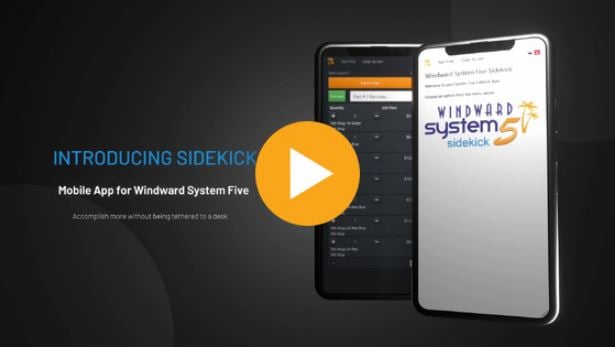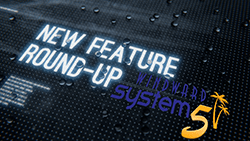Signature Capture on Cloud With Topaz T-LBK460-BSB-R and
T-LBK462-HSB-R
Sig Cap Model :
T-LBK460-BSB-R and T-LBK462-HSB-R (using new Virtual Serial via USB Driver)
Cloud and RDP Installation for the T-LBK460-BSB-R, T-LBK462-BSB-R
and T-LBK462-HSB-R
We can now support the T-LBK462-HSB-R on cloud. Topaz has released a new driver to make the T-LBK462-HSB-R emulate the T-LBK462-BSB-R. The difference was:
- The HSB-R was USB Only.
- The BSB-R was USB but uses COM Port Emulation.
Topaz has now updated the T-LBK462-HSB-R To emulate the T-LBK462-BSB-R and give it the same ability to use COM Port Emulation.
PROCESS: Server-Side Installation Steps
1. Cloud Operations must install the Topaz SigPlus software on the Cloud Server for the client and choose the T-LBK462-BSB-R model
2. The DemoOCX.exe will need to be copied to the user’s desktop to test the Sig Cap Device.
Client-Side Installation Steps
If your client PC is already set-up to use a Topaz pad, uninstall the SigPlus driver in “Programs and Features” before continuing.
1. Download the HSB-to-COM Driver for Topaz HSB Signature Capture Pads. or the SigPlus-bsb driver from
https://www.sigpluspro.com/sigplus-bsb.html
1b. Follow the steps on Topaz's web site to download the drivers.
2. Run the sigplusbsb.exe installer (Right click on it and run as administrator).
3. Accept the license agreement and Click “Next”.
4. When installation is complete, click “Finished” to close the dialog.
5. On the client, open the “Device Manager” by clicking on “Start” ? “Control Panel” ? “System” ? “Device Manager”.
6. Under “Ports (COM & LPT)”, confirm that the Topaz HSB Port is listed.
Note: The Topaz HSB Port is only listed if the signature pad is connected to the PC. You may also need to click “Action” on the file menu and “Scan for hardware changes” in the dropdown to refresh the ports list. For now, you can just accept the COM Port number that is listed. However, you may need to change it later. Download SigPlus.exe from Topaz and install it. You will need to Right Click on it and Run as Administrator. http://www.topazsystems.com/software/sigplus.exe
Click Next
Click Next
Leave the default Destination Folder and just click Next
Select the radial next to T-L and click OK
Select the radial next to T-LBK462 or T-L462 and click OK
Select the radial next to Com 4 and click OK. We know this isn’t the correct COM Port number, but the setup only allows COM 1 through COM 4 so we just need to select one to continue on. We will need to change this COM Port later anyway.
Agree to the license agreement.
And YES we want a shortcut on the desktop.
Click Finish to complete the installation. Now we want to connect to the User Desktop in System Five on Cloud and copy the DemoOCX executable to it. Sign into the cloud environment and once you are on the desktop, minimize the session. Now, on your local computer, locate the Icon for DemoOcx.
Right Click on the DemoOCX icon on the desktop and select Properties
Click on Open File Location
In the right-hand window, right click on DemoOCX.exe and select copy from the dropdown. Now go back to your System Five on Cloud Session, right click on the desktop and select Paste from the dropdown.
This will copy the executable to the cloud session for testing. We also need this so that we can see what Com Port the Topaz driver is using on the cloud so we can change the COM Port on the local workstation to match this setting.
This is the testing program for the Sig Cap Devices. Double click on it to open the demo. Click on the Properties button
Click on the Tablet tab and then make a note of the COM Port number here. This is the COM Port number we will need to set in the local workstation.
Click the cancel button and close the SigPlus Demo and sign out of the System Five on Cloud session.
Back to the client: On the client workstation 1. open the “Device Manager” by clicking on “Start” ? “Control Panel” ? “System” ? “Device Manager”.
2. Under “Ports (COM & LPT)”, confirm that the Topaz HSB Port is still listed.
We now need to change the assigned COM Port to the same one you noted in the Cloud environment. In my example it was COM 9.
Double Click on Topaz HSB Port to open its properties.
Click on the Topaz tab
Select the COM Port you noted from the Cloud from the dropdown (again, this was COM 9 in my example).
Click the Set button.
Click OK to close the window.
You may need to click “Action” and “Scan for hardware changes” for the Device Manager screen to refresh. Close the device manager.
Using a text editor like Notepad, browse to C:\Windows and open the SigPlus.ini file.
In the SigPlus.ini file, change the “TabletComPort” to equal the COM Port number you just entered in Device Manager. Again, in my example it was COM9.
Click “File” and “Save” to save the changes, then exit out of the SigPlus.ini file.
If Windows won’t allow you to save the changes, you will need to browse to the Windows folder, right click on the SigPlus.ini file, click on security tab, click the edit button, click users, click the check box beside Full Control, click Apply, Click Yes on the security warning about changing the permissions, click OK, Click OK on the SigPlus ini properties, and now you should be able to save the changes to the SigPlus.ini file.
Open “DemoOCX” with the desktop shortcut or opening from C:\Windows\SigPlus\DemoOCX.exe.
Note: If DemoOCX is still open from a previous test, restart the utility.
Test the signature capture here in the local workstation. If it is working correctly, sign back into the cloud environment and test it there in the DemoOCX program.
If it is working in the DemoOCX program you can now open System Five in the cloud environment and providing you have setup the invoice tree and the invoice forms correctly, the Signature Capture Device will work there as well.
System Five Setup
These steps are basically the same as the ones we use for On Premises installations
Step 1) Select Setup Wizard
Step 2) Select Point of Sale Devices
Step 3) Select Signature Capture
Step 4) From the drop down list, select the installed signature capture device. System Five™ currently only supports the one model, however similar size Topaz units should also work.
Step 5) Use Sig Capture for Credit Cards
Check this option is you want to electronically sign a credit card receipt. You must ensure that your merchant agreement allows electronic signatures in the event of a charge back. The electronic signature is not transmitted to the credit card processor.
Step 6) Allow viewing of Signature on stations without signature capture devices
Check this option to allow back office and other stations to view signatures without having a signature device installed.
Setting up the Full size invoice forms to include signature
Step 1) Drag Signature Capture icon to Full size form
Step 2) Drag Laser printer to Signature Capture, (If you want two copies drag another printer over).
You must also setup the invoice form to include the Signature field. Usually you would drag that to the Totals area of the invoice form. This field must be there on the invoice form or the signature won't be collected.
Open an invoice and test.

























